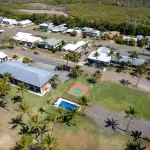Some Insights Into the Small Business Market

Some Insights Into the Small Business Market
The “Baby Boomer” exit has been a major factor in providing the marketplace with a relatively large number of businesses listed for sale over the 2021/22 financial year. If this has not been the case, given strengthening purchaser demand which also occurred over the same period, it is likely that business sale prices/ value multiples would have increased substantially – similar to what happened in the property market.
It will be interesting to see, in the longer term, as the baby boomer exit declines, if business values will increase as the supply of listings declines.
The number of small businesses for sale across Australia reached a two-year peak of around 13,400 in September 2022. This has since fallen by around 8% to 12,300. It is too early to predict if there will be a sustained downward trend in listing numbers, though it is a good time to examine some of the reasons listing numbers change. Such factors include the following:
-
Ageing nature of business owners – the “Baby Boomer” population bubble covers people born between 1946 and 1964. Business owners of this generation are now aged between 59 to 77. This means the average age Baby Boomer is now 68 years old. Have we now seen the peak of the Baby Boomer owned businesses being sold?
-
"Covid-19 Effect” – Many brokers have reported that business owners have decided to make lifestyle decisions after the main impacts of the pandemic ie. comments like -“life is too short to keep working hard for a long period, so time to sell the business and start enjoying ourselves more”.
-
Strength of purchaser demand – if there is low demand, many vendors will become discouraged and withdraw their business from the market. Conversely, if businesses are selling well, more vendors are encouraged to list their business for sale.
-
Two years of strong trading - Over the last two years, with many business types experiencing improved trading figures, a larger than normal number of business owners (including baby boomers) have looked to sell their business/ exit the market. There has also been relatively strong purchaser demand for most business types. As such, market conditions have been close to ideal, with both solid purchaser demand and also a good number of businesses being listed for sale.
Other general observations of the current marketplace include:
-
Purchaser Demand Remains Relatively Strong Even if Slightly Moderating - Most business brokers are now sensing a slight fall in purchaser demand. However, this is to be expected given the well above average demand over the past two years, within an environment of rising interest rates/ falling real estate values. A decrease in house prices means that business purchasers have less equity in their homes, with which to provide security for purchase of a business. Decreasing real estate prices also erodes confidence.
-
Discretionary Goods/ Service Businesses Attracting Lower demand – Discretionary retail, hospitality, non-franchise bakeries, gyms, hair and beauty salons are some of the sectors that are attracting a lower level of demand.
-
"Buy a Job Businesses” Attracting Lower Demand - In particular, where one-owner profits are less than $150,000, given the high level of employment in the economy.
-
Business Types Attracting Stronger Demand - Stronger demand remains for supermarkets, online retail, mining services, transport logistics and warehousing. There is growing demand for green/environmental exposure industries, such as solar, revegetation, carbon offset service businesses, etc. Brokers are also noting higher demand for businesses with profits over $300,000.
For more details of specific business types that are attracting higher/lower demand, and current prices being achieved, subscribe to the Business Values Newsletter by clicking the link here: www.jarot.com.au

CURRENT PROFILE OF THE SMALL BUSINESS SECTOR IN AUSTRALIA
For over 30 years, Business Values Newsletter has been reporting on the small business to medium business market in Australia. Whilst there is technically over 2.5M businesses in Australia, the reality is that around 1,550,000 of these, are micro businesses which have no employees and are often sole operators/ subcontractors with an ABN number. Large businesses with over 200 employees, make up only around 4,500. Therefore, the vast majority of transactional activity is in the small and medium size business categories, which total around 1,000,000 in number.
Business Values Newsletter focusses on the small and medium size categories, as this is where there is the greatest number of transactions in the marketplace and hence the greatest demand for information.
The two tables below summarise business numbers by employee and revenue.
Number of Businesses – Size Category By Number of Employees
Number of Businesses By Revenue Amount
Notes on Above Tables:
-
Many of the 1,550,000 Micro businesses with 0 employees are sole proprietors or simply subcontractors with an ABN number – As such they are not often saleable businesses.
-
The remaining and typically most saleable businesses therefore total around 1M in number.
-
Of the 1M saleable businesses, around 780,000 have revenue of less than 2M and the remaining 220,000 have revenue of less than 10M
-
In the last 5 years, the number of businesses in the small to medium range has increased by around 18%
It is in recognition of the above statistics that Business Values Newsletter focusses on analysis of the marketplace for businesses that have 10M or less in revenue and most often 2M or less in profit.
Market Value Multiples/ ROI’s For Small Businesses
This author has completed some high level analysis of around 1000 sales ranging in price using the Australian Institute of Business Brokers “Bizstats Database”. The sales are ranging in price from $50,000 to $5,000,000. All of the sales on this database are analysed on the basis of the business assets included in transactions being limited to Stock/ Work In Progress, Plant/ Equipment and Goodwill (ie not including working capital, other assets or liabilities).
Businesses sold are mainly based on two standards of profit being;
-
PEBITDA (Proprietors Earnings Before Interest Tax Depreciation and Amortisation) and EBITDA (Earnings Before Interest Tax Depreciation and Amortisation) – Essentially profit prior to one main working owners salary being allowed for.
-
EBITDA (Earnings Before Interest Tax Depreciation and Amortisation) - Essentially profit undermanagement, where all working owners salaries have been adjusted to market salaries.
Main points of analysis from the sales data for each of the standards of profit are:
PEBITDA Standard of Profit:
-
Around 65% of all the sales were transacted based on a PEBITDA standard of profit.
-
The PEBITDA based sales are mainly for business sold for prices $2,000,000 and under.
-
Around 70% of all of the PEBITDA profit based sales reflect multiples between 1 and 3 times profit.
(EBITDA) Standard of Profit:
-
The majority of business sales transacted at $2,000,000 or above, are sold based on an EBITDA standard of profit.
-
The majority of sales in this size category, reflect multiples of between 2 to 5 times EBITDA.
For more details on the small business market and values, subscribe to the Business Values Newsletter.
You are able to access a free example of the newsletter using the “free edition” button at the bottom of the Website home page.
To subscribe, go to www.jarot.com.au and click the subscribe to newsletter button.
Tags: market valuations baby boomers report
About the author

Chris Milne
Chris completed a Bachelor of Business Degree Majoring in Valuation and Land Economy from Curtin University. He is accredited as a Registered Business ...





